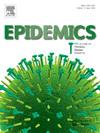机器学习方法实时邮政编码和县级估计全州传染病住院使用当地卫生系统数据
IF 2.4
3区 医学
Q2 INFECTIOUS DISEASES
引用次数: 0
摘要
由于缺乏估算细粒度地区实时传染病负担的常规方法,无法及时有效地采取公共卫生应对措施。由于 1) 数据报告严重滞后,2) 提供给研究人员的数据缺乏地理粒度,此类估算通常所需的综合数据源(如州卫生部门数据)往往受到限制。利用当地卫生系统的实时数据为克服这些挑战提供了机会。本研究评估了机器学习和统计方法的有效性,这些方法使用当地卫生系统数据来估算南卡罗来纳州当前和以往的 COVID-19 住院情况。在 123 个邮政编码(72.29%,IQR:63.20-75.62%)和 28 个有足够医疗系统覆盖范围的县(76.43%,IQR:70.33-81.16%)中,随机森林模型与广义线性混合模型相比,在当前每周住院情况方面显示出更高的平均中位数百分比一致性准确率。为了考虑到医疗系统中代表性不足的人群,我们将随机森林模型与分类和回归树 (CART) 结合起来进行估算。所有邮政编码和所有县的平均一致率中位数分别为 61.02 %(IQR:51.17-72.29 %)和 72.64 %(IQR:66.13-77.69 %)。在所有邮政编码中,前 6 个月累计住院治疗的中位同意率为 80.98 %(IQR:68.99-89.66 %),在所有县中为 81.17 %(IQR:68.55-91.33 %)。这些发现强调了利用实时卫生系统数据估算传染病负担的有效性。此外,本研究开发的方法还可用于估算其他疾病的住院人数,为公共卫生官员迅速有效地应对各种卫生危机提供了宝贵的工具。本文章由计算机程序翻译,如有差异,请以英文原文为准。
Machine learning approaches for real-time ZIP code and county-level estimation of state-wide infectious disease hospitalizations using local health system data
The lack of conventional methods of estimating real-time infectious disease burden in granular regions inhibits timely and efficient public health response. Comprehensive data sources (e.g., state health department data) typically needed for such estimation are often limited due to 1) substantial delays in data reporting and 2) lack of geographic granularity in data provided to researchers. Leveraging real-time local health system data presents an opportunity to overcome these challenges. This study evaluates the effectiveness of machine learning and statistical approaches using local health system data to estimate current and previous COVID-19 hospitalizations in South Carolina. Random Forest models demonstrated consistently higher average median percent agreement accuracy compared to generalized linear mixed models for current weekly hospitalizations across 123 ZIP codes (72.29 %, IQR: 63.20–75.62 %) and 28 counties (76.43 %, IQR: 70.33–81.16 %) with sufficient health system coverage. To account for underrepresented populations in health systems, we combined Random Forest models with Classification and Regression Trees (CART) for imputation. The average median percent agreement was 61.02 % (IQR: 51.17–72.29 %) for all ZIP codes and 72.64 % (IQR: 66.13–77.69 %) for all counties. Median percent agreement for cumulative hospitalizations over the previous 6 months was 80.98 % (IQR: 68.99–89.66 %) for all ZIP codes and 81.17 % (IQR: 68.55–91.33 %) for all counties. These findings emphasize the effectiveness of utilizing real-time health system data to estimate infectious disease burden. Moreover, the methodologies developed in this study can be adapted to estimate hospitalizations for other diseases, offering a valuable tool for public health officials to respond swiftly and effectively to various health crises.
求助全文
通过发布文献求助,成功后即可免费获取论文全文。
去求助
来源期刊

Epidemics
INFECTIOUS DISEASES-
CiteScore
6.00
自引率
7.90%
发文量
92
审稿时长
140 days
期刊介绍:
Epidemics publishes papers on infectious disease dynamics in the broadest sense. Its scope covers both within-host dynamics of infectious agents and dynamics at the population level, particularly the interaction between the two. Areas of emphasis include: spread, transmission, persistence, implications and population dynamics of infectious diseases; population and public health as well as policy aspects of control and prevention; dynamics at the individual level; interaction with the environment, ecology and evolution of infectious diseases, as well as population genetics of infectious agents.
 求助内容:
求助内容: 应助结果提醒方式:
应助结果提醒方式:


